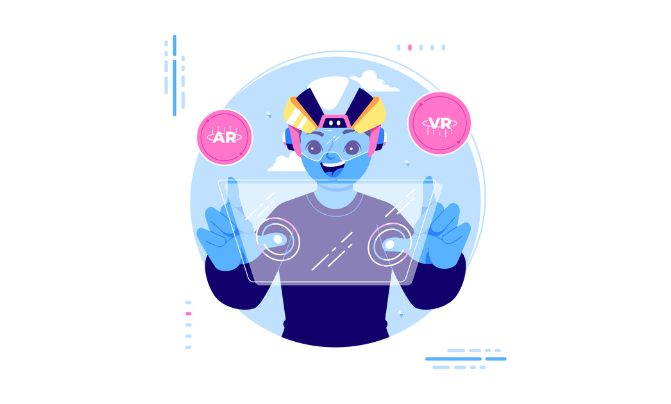
Artificial intelligence is rapidly evolving into a standard resource for game developers. Although AI in video game development is still in its infancy, corporations in the industry are beginning to see the appealing benefits, such as improved player experience and reduced costs.
AI Games are different than regular games
Simply put, conventional AI, as we know it, is capable of learning on its own. It learns from its experiences and adapts its behavior accordingly. The better AI gets, the more its creators and developers anticipate it will start thinking for itself.
However, video game AI does not acquire consciousness or learn. Contrarily, artificial intelligence in video games is a collection of algorithms designed to carry out a certain set of responses to a specific set of inputs. The game AI can only show the limited variety of reactions that its creators have programmed into it.
This limitation is necessary since game AI can only simulate human and non-human actions. It is not the goal of game AI to be lifelike but rather to give players that impression. Simply put, from the perspective of the people who build games, predictability is essential. For a game to be enjoyable, its creators must be aware of every possible player action and design accordingly.
The opposite of this is a self-learning AI that acts following its own desires. Furthermore, AI would restrict the freedom of game designers and developers.
Game studios have developed some AI approaches and procedures to maximize the fun they can give their customers within the constraints of the games they’re making. Some examples follow:
Pathfinding is the correct response.
Envision that your player character has moved to a place more frequented by hostile NPCs. Noises made by your character as they move about will alert other NPCs to your presence. The arrival of random NPCs at your location raises the question of how they can possibly learn of it.
Within a given area, pathfinding is the process of determining how to get from A to B. This method is used in video games so that non-player characters can navigate the world and discover the quickest path between any two spots while avoiding danger.
Finding the quickest path is usually the best option. Because getting from A to B may include several different options. However, the player’s perception of the AI’s realism decreases as the AI’s path lengthens.
The game’s map is converted into a network with various nodes so that AI always takes the shortest path. A waypoint would be established at each of these intersections. By comparing the distance between the NPC’s current location and the player-controlled character’s current location, the algorithm determines the shortest path for the NPC to reach its destination.
The method needs to read through the whole graph once to figure out where all the nodes and vertices are, making this calculation extremely fast.
This strategy is superior to determine the shortest route between two points by first determining all possible routes. Given that such a computation would slow down the game, it would be counterproductive to do so.
Finite State Machine
A Finite State Machine is an artificial intelligence system used in games to determine the actions of NPCs. The NPCs change their emotional states in response to specific trigger
Suppose, for instance, your character in the game is close to some hostile NPCs. These foes would start off in a state of ‘idleness,’ waiting for a threat to arrive before taking action. The adversaries’ status will shift from “idle” to “attack” as soon as they become aware of your presence. As a result of your character’s altered mental state, the hostile characters have altered their behavior and are now actively fighting you. If you defeat an enemy and reduce their HP to zero, they will enter the “Death” state.
The aforementioned illustration oversimplifies the Finite State Machine used in in-game AI. Modern video game development with artificial intelligence displays a broader spectrum of behavioral combinations because of Finite State Machines.
Procedural Generation
In-game content can be generated procedurally using artificial intelligence. Assets, music, and levels are all generated mechanically based on this algorithm.
Infinite games are the primary users of this method. No Man’s Sky, a game in which players can travel to other planets in a virtual universe, is a prime example. No Man’s Sky features 18 quintillion planets, each with its own unique ecosystem. As the game’s universe is so massive, hand-crafting it was just not an option. Because of this, the developers employed procedural generation.
Contrary to common belief, the game’s assets are not generated randomly. Instead, they result from a fixed set of rules and resources. The team collects the artists’ work and organizes it in various materials. The system then merges these many sub-assets using mathematical formulae, yielding an endless number of unique game assets.
In what way? No Man’s Sky’s abundant flora and animal varieties create the impression that the game’s artists painstakingly crafted each element.
Player Experience Modeling
Learning each player’s taste and then modifying the game experience to suit them would be the holy grail of mobile game development (in terms of user retention and monetisation).
Take into account that the ideal length of a session for Players A and B varies from time to time. Gamer A likes to play for longer periods of time than Gamer B does. The game would thus feature either (A) longer stages with more obstacles and adversaries or (B) shorter levels. Even though they would play the same game, their experiences would differ.
Player-Experience modeling describes this sort of tailoring of the gaming experience. The industry’s best mobile game studios use this artificial intelligence method to improve their games.
The data is the most important part of this AI system for games. The game designers use the data to figure out what players like. After analyzing the data, the game adjusts each player’s experience so they have the most fun possible.
Unity GameTune was a player modeling tool used by gaming studios. However, it has since been decommissioned. Information was gathered from all of Unity’s services to fine-tune the experience for each player. Utilizing the tool resulted in increased LTV, retention, and income for developers compared to non-personalized games.
Data collected from players through analytics provides a solid foundation for identifying demographic tendencies. Additionally, it is more precise than the players’ self-reported preferences.
Also Read : Why NFT Game Development is Popular?
Analytics
Game analytics technologies are used to track player activity in games across a variety of measures. This greatly improves player involvement, retention, and game revenue.
To illustrate, say you’re interested in seeing how players react to a different assortment of in-game purchases. After integrating the IAP, you may monitor user reactions with analytics. Your gamers’ feedback will inform whether you should bring back the IAPs or try something else.
In addition, combining analytics with A/B testing makes for a formidable tactic. During A/B testing, users are split into two groups and given slightly different versions of the game. To reprise the IAP example, you could, for instance, present two IAPs to separate target audiences to see which one generates more interest.
Many of today’s mobile game studios rely heavily on this method of development, which combines analytics with A/B testing because it gives them a better idea of how their game is doing in terms of things like DAU, Sessions, Retention, and Playtime.
Top game studios may use this information to analyze the gameplay and make adjustments to boost important metrics like engagement, retention, and profitability.
Conclusion
Despite being around for decades, artificial intelligence (AI) in games is still behind the times in comparison to other applications of the technology.
But that is not the case due to the existence of methods like Pathfinding. Creators have used video game AI to make more interesting games because of the rise of tools like Finite State Machines and Game Analytics.



